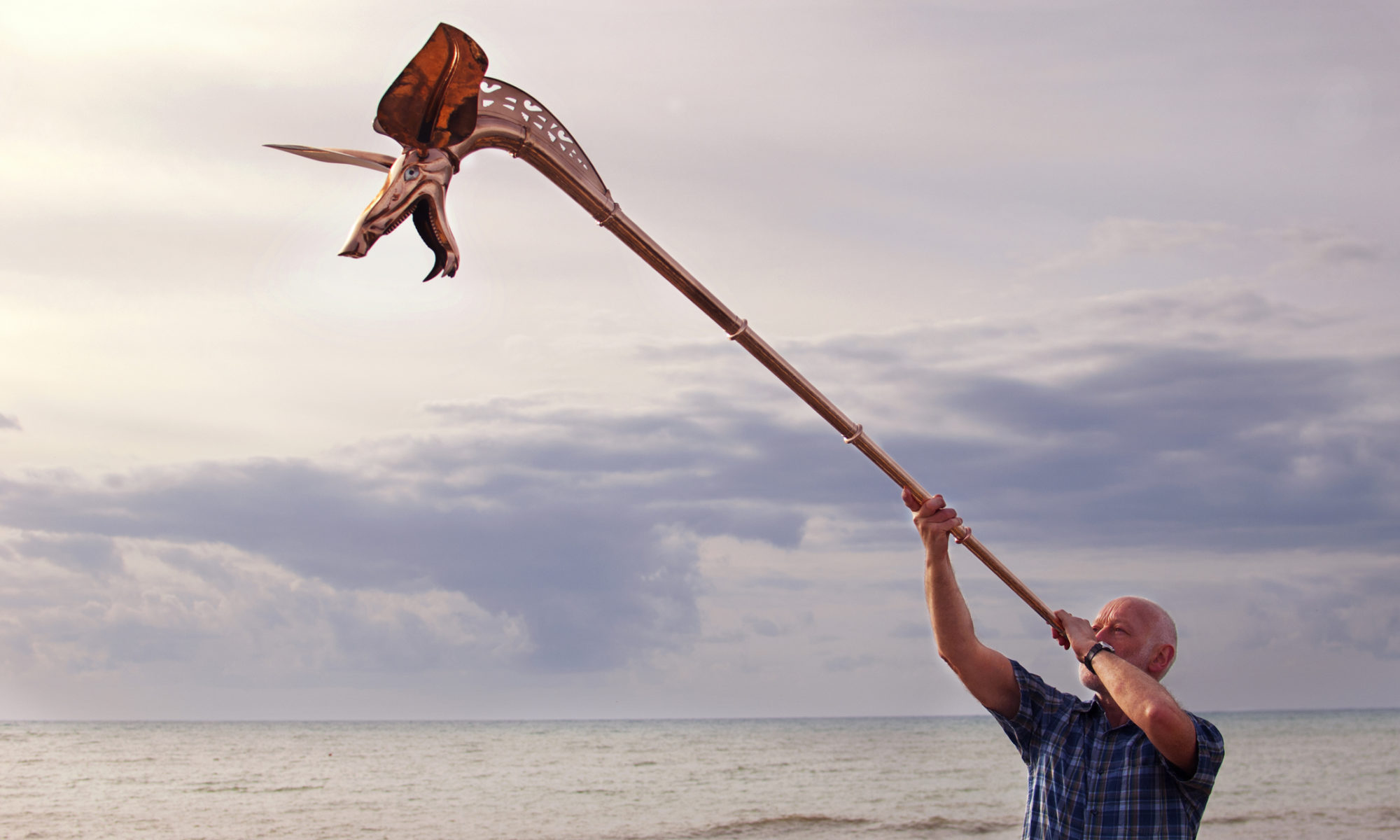The lituus originated in the Etruscan civilisation, which ruled most of central Italy from about 750 BC, until it was definitively taken over by Roman culture around 700 hundred years later.
The instrument consisted of a long thin tube of thinly beaten bronze, curved at the end, almost in the shape of a ‘J.’ Numerous Etruscan tomb paintings and stone reliefs demonstrate that the lituus was often played in pair with the Etruscan cornu, in ceremonies and funerals of high ranking people. It was later adopted by the Roman army, which lead to a change in its character and use.
The instrument in the Carnyx & Co collection is modelled from a life size stucco relief in the Tomba dei Rilievi, in the Etruscan Necropolises of Cerveteri and Tarquinia dating from the end of the 4th century BC. It is one of two identical instruments which were reconstructed as part of the European Music Archaeology project, designed by Peter Holmes and made by John Creed, working with John Kenny as musical consultant and Murray Campbell as musical acoustics advisor.
John Kenny has performed and recorded new music for the instrument, both as a soloist and as a duo with his son Patrick Kenny in Italy, France, Germany and the UK, combining contemporary brass techniques with the principles underlying their performances and recordings on carnyx and Loughnashade horn.

